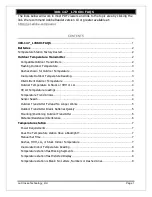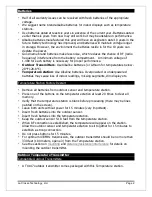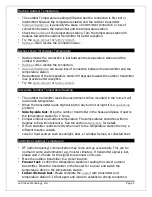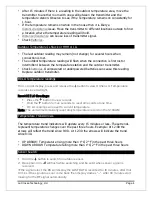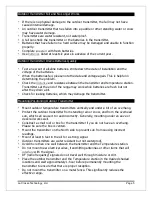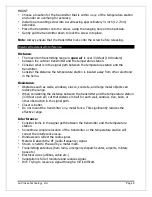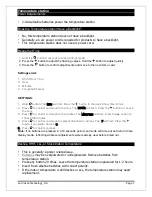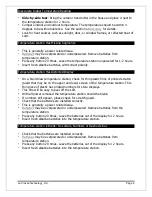
La Crosse Technology, Ltd.
Page 5
Outdoor Transmitter Fell and No Longer Works
•
If there is no physical damage to the outdoor transmitter, the fall may not have
caused internal damage.
•
An outdoor transmitter that has fallen into a puddle or other standing water or snow
may have water damage.
•
Transmitters are water resistant, not waterproof.
•
A fall can shock the transmitter or the batteries in the transmitter.
•
Batteries that have fallen on a hard surface may be damaged and unable to function
properly.
•
•
dated at least six years in advance of the current year.
Outdoor Transmitter Drains Batteries Quickly
•
Test a new set of alkaline batteries. Write down the date of installation and the
voltage of the batteries.
•
When the batteries fail, please note the date and voltage again. This is helpful in
determining the problem.
•
and resistance between the transmitter and temperature station.
Transmitters at the end of the range may work while batteries are fresh but not
after they drain a bit.
•
Check for leaking batteries, which may damage the transmitter.
Mounting/Positioning Outdoor Transmitter
•
Mount outdoor temperature transmitters vertically and under a bit of an overhang.
•
Protect the outdoor transmitter from standing rain or snow, and from the overhead
sun, which can cause it to read incorrectly. Generally, mounting under an eave or
deck rail works well.
•
Construct a small roof or box for the transmitter if you do not have an overhang.
Please be sure the box is vented.
•
Mount the transmitter on the North side to prevent sun from causing incorrect
readings.
•
Mount at least 6 feet in the air for a strong signal.
•
Outdoor transmitters are water resistant but not waterproof.
•
Avoid more than one wall between the transmitter and the Temperature station.
•
Do not mount near electrical wires, transmitting antennas or other items that will
•
RF (radio frequency) signals do not travel well through moisture or dirt.
•
Place the outdoor transmitter and the Temperature station in the desired shaded
locations and wait approximately 1-hour before permanently mounting the
transmitter to ensure that there is proper reception.
•
Do not mount the transmitter on a metal fence. This significantly reduces the
effective range.

